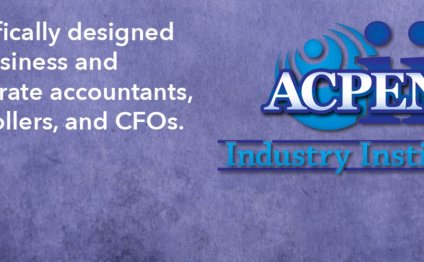
Accounting and Auditing CPE
The “new economy” really means new ways of doing business that involve digital and borderless transactions. That is, a business likely connects with clients via an Internet connection organized by software or an “app.” The location of the customer may not be important, particularly if the “product” is digital or services that can be provided electronically (online). Often, the costs to start generating revenues in the new economy are minimal. It might just involve signing up at a website as someone who can provide services (face-to-face or online) or offer to share (rent) property, such as a room in their home or their car. This part of the new economy is often referred to as the sharing economy or peer-to-peer networked economy where parties seeking to offer or use services or property are easily connected. Many aspects of the connection, such as payment and assessment, are completed on websites or apps that are simple to navigate.
Some of the companies creating shared economy opportunities have grown rapidly, such as Airbnb and Uber. There are in fact though, numerous “sharing economy” operations beyond these two. The low barriers to entry, and desire by many to generate income (or at least cash flow), makes it highly probable that at least one of your clients is generating income from sharing or freelancing. It is also likely that your client needs assistance with the recordkeeping and income tax consequences of this cash-generating activity. Planning on how to optimize the treatment of deductions and any losses may also be needed. In addition, freelancing also leads to self-employment tax and perhaps local business license taxes. Home-sharing often also involves local transient occupancy tax (TOT), business license tax and perhaps other local taxes. Some short-term rentals may be subject to self-employment tax.
The continued growth in the sharing economy makes this a practice area that can’t be ignored.
Special rules apply to property acquired as a gift. The determination of the basis for depreciation purposes and the amount of deductible loss on the eventual sale of the asset are treated differently for property received as a gift.
The first step in determining the depreciation deduction allowable for property received as a gift is to determine the donor’s adjusted basis, the FMV of the property at the time of the gift, and any gift tax paid by the donor on the gift.
The donor’s adjusted basis plus a portion of the gift tax paid by the donor is used by the taxpayer to establish their depreciable basis in the gift. However, unlike a related party transaction, the taxpayer does not “step into the shoes” of the donor. Instead, the taxpayer starts the depreciation recovery period as of the date of the gift, using the applicable convention and method.
Example: Grandpa decided it was time to abandon his summer home and move permanently to Florida. On April 30, 2015, he gave his house to his niece, Peggy. The FMV of the property at that time was $250, 000. Grandpa’s basis in the home was $200, 000. He filed Form 709, U.S. Gift (and Generation-Skipping Transfer) Tax Return, but did not owe any gift tax.
Peggy decides to use the house as rental property. On her 2015 return, she reports the acquisition date as April 30, 2015, and a beginning basis of $200, 000. Residential real estate is depreciated over 27.5 years using the mid-month convention and the straight-line method.
For gifts received after 1976, a portion of the gift tax that was paid on the gift is added to the basis. This is calculated by multiplying the gift tax by a fraction. The numerator of the fraction is the net increase in value of the gift, and the denominator is the amount of the gift. The net increase in value of the gift is the FMV of the gift less the donor’s adjusted basis. The amount of the gift is its value for gift tax purposes after reduction for any annual exclusion and marital or charitable deduction that applies.
High-income clients face a number of complex tax-planning issues. Recent changes in tax law implemented by the Affordable Care Act (ACA) and ATRA have greatly increased the potential tax liability of this group of taxpayers.
Provisions important to high-income taxpayers include the following.
INCOME TAX MARGINAL RATE – ATRA permanently lowered the marginal tax rates for many middle-income taxpayers. However, it permanently increased the highest marginal tax rate for high-income earners from 35% to 39.6%. This increase affects single taxpayers with 2015 taxable incomes greater than $413, 200 and married filing jointly (MFJ) taxpayers with taxable incomes greater than $464, 850.
ADDITIONAL MEDICARE TAX – Beginning January 1, 2013, the ACA implemented an additional Medicare tax of 0.9% for taxpayers whose wages, compensation, and self-employment (SE) income exceeds threshold amounts. Thresholds for 2015 are $200, 000 for single taxpayers and $250, 000 for married filing jointly (MFJ) taxpayers. The additional Medicare tax applies to the following income categories.
YOU MIGHT ALSO LIKE



Share this Post
Related posts
Journal of Modern Accounting and Auditing
The objectives of the present study are to put forth the concept of corporate social responsibility (CSR) in Turkey (Kayseri)…
Read MoreEnvironmental Accounting and Auditing
Generations ago few people were aware of economics beyond their own jobs and expenses, and few companies thought beyond the…
Read More










